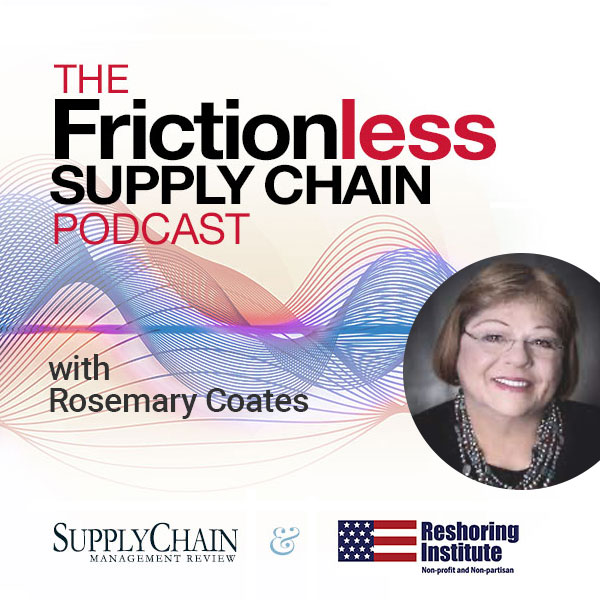In the current economic climate, it’s hard enough to manage the forward flow of products to customers, let alone having to think about the reverse flow. But not thinking about the reverse flow of products could mean missing important opportunities for guiding your company through tough times. Effective returns management can provide additional means of positively impacting your firm’s financial performance as well as building stronger relationships with key customers.
It’s important to understand the total impact of return products. Financially, returns represent a negative adjustment to sales. But it’s much more than just a top-line impact. Most firms don’t understand the operational cost of returns because these costs often get buried in the financial line items of facility operations. But every return product incurs transportation to the customer, then back to the company. If replacement product is being sent, a third transportation charge is incurred.
When the returned product is re-entered into the inventory ledger, it starts incurring inventory carrying costs, and takes up warehouse space. Each of these logistical activities is expensive and must be considered part of the total cost of returns—beyond the negative adjustment to sales.
Perhaps even more important, however, is the impact of returns on customer relationships. Every return represents a failed service encounter. For some reason the customer was not happy with the sale, and this can turn result in dissatisfaction with the company itself. If returns become a hassle for the customer, the longevity or quality of the customer relationship may be impacted. Companies that handle returns effectively—by working with customers to resolve service issues—can actually improve a customer’s loyalty to their firm.
Know the Source and Reasons for Returns
Two key inter-related aspects of returns include the source of the returns and reasons for the returns. In a supply chain context, a manufacturer’s products may be returned from intermediaries (e.g., distributors or retailers) or they may be consumer (or end-customer) returns from the person or firm that is actually using the products. Returns from intermediaries are very different from end-customer returns. Understanding why returns occur helps identify opportunities for improving supply chain processes and decision-making.
At the consumer or end-customer level, defective product comes back after purchase and some level of use. Such returns could indicate quality problems that need to be resolved in manufacturing or distribution. It is important to get a handle on these returns as quickly as possible. But many times firms find no defects upon inspection of returned products. These no fault found returns may be indicative of customers not understanding how to use the product appropriately, not being able to properly install the product, or simply finding that the product was not what they were expecting. These returns signal the need to re-engineer the product or communicate more effectively to customers about what to expect and how to use/install the product. Understanding the reasons for defective returns and no fault found returns requires the involvement of a cross-functional team that might include product design, engineering, packaging, manufacturing, distribution and marketing. The goal is to identify why these types of returns are happening and work to reduce their volume.
At the retail or intermediary level, returns often come back due to slow-moving stock, end-of-season inventory adjustments, or as a means to release capital so customers can buy more from your firm. As retailer power in the channel continues to grow, manufacturers are being asked to bear an increased responsibility for taking back unwanted retail-level inventory. This is not necessarily a bad thing, as “fresh” product can command a higher margin than old product, and can be more competitive in the battle for consumer dollars. On the other hand, manufacturers get stuck with old inventory. Such product may have diminished market value, thus making profitable sales to other customers increasingly doubtful. The key to managing these returns is to try to avoid them. That doesn’t mean playing hardball with customers by simply refusing returns; rather, it means better matching demand and supply in the first place.
One consumer electronics company had always employed a traditional approach of selling as much product into the retailers as possible at the beginning of each season, often offering deals for larger orders. The sales people bore no responsibility for returns that might result from their over-zealous sales efforts. But the operations and logistics people sure felt the burden and the cost of receiving high volumes of returns each season! The solution came about when the logistics, finance, technical support, marketing and sales managers developed a “sell right, not more” planning approach. This approach also involved the retail customers in early sales-term negotiations to determine initial product volumes to be delivered to them each season. Although gross margin was reduced up front, the bottom line impact of avoiding all the costly end-of-season retail returns actually improved the company’s bottom line. The company has also used this approach to strengthen relationships with key customers. Determining the right amount of product to sell, developing responsive logistics capabilities to supplement product volumes when needed, and avoiding end-of-season markdowns and returns has helped this firm create value for its major customers.
Four Basics of Effective Returns Management
Based on the discussion so far, there are four fundamentals to effective returns management. First, think strategically about returns management within your broader supply chain strategy. Appropriate returns policies can strengthen relationships with key customers. Such policies can also enhance your firm’s profitability by keeping fresh product in the marketplace and by efficiently managing the operational logistics of handling returns. As part of your strategic focus, remember that returns management is a cross-functional process. Get the right people involved from the start—from marketing and sales, operations, logistics, customer service, accounting, and finance. Firms that recognize the cross-functional nature of returns also are able to more effectively integrate forward and reverse supply chain flows for maximum effectiveness.
Second, develop appropriate gatekeeping, disposition, and avoidance policies. Gatekeeping refers to the screening procedures employed to identify how, and which, products enter the return stream. Effective gatekeeping recognizes that not every product should enter the return flow. When the cost of transporting and processing the return product is greater than the value of the product itself, it’s more cost effective to credit the customer but not require that the product be returned. Of course, this requires a solid understanding of the cost of a return, relative to the value of each product. Ultimately, avoiding returns can resolve many of the gatekeeping and disposition issues, while dramatically controlling costs. Companies struggling with sku proliferation issues will find that returns can be avoided by simplifying product lines. Developing more responsive logistics systems can also enable companies to develop their “sell-right, not more” approaches and avoid the production and distribution of too much inventory. Quality control initiatives in the manufacturing and distribution processes can also help avoid returns. The cost and customer dissatisfaction associated with returning product damaged in transit, for example, is totally avoidable—but not always recognized.
Third, operational policies and procedures must be developed to handle returns. Returns authorization policies help ensure that effective gatekeeping occurs, that customers are credited promptly, and that inventory visibility is created as early as possible. Inventory visibility also helps to operationally plan staffing and disposition opportunities in a timely manner. Determining disposition as early as possible is important for recapturing as much value in the product as possible. Product that can be resold needs to be re-inserted into the forward supply chain as quickly as possible. And product that requires refurbishment or remanufacturing needs to be identified so as to maximize value recapture as quickly as possible.
Fourth, metrics and performance expectations for returns management must be aligned across functional areas and with overall supply chain strategy. For example, if marketing/sales people bear no responsibility or accountability for returns, there is no incentive to manage profitable sales. Returned inventory will continue to be a problem. Likewise, if operational people have no value goals or efficiency goals, processing effort will be wasted. Goals regarding processing returns need to be aligned with objectives relating to timing, volume, or value of returns as these goals should drive operational priorities and activity for maximum efficiencies. Ultimately, firms can employ the “sell right, not more” approach to identify goals across the organization that will more appropriately align demand and supply so as to minimize the need for returns.
In summary, returns management should no longer be the ugly step-child of the supply chain. Rather, effective returns management can improve a firm’s profitability, enhance customer relationships, and be an essential part of an integrated supply chain management strategy.
In examining the basics, our experts from the University of Tennessee will explain how mastery in the following areas leads to success on the bigger supply chain stage:
- MANAGING THE BASIC SUPPLY CHAIN FUNCTIONS (Part 1)
- TRANSPORTATION (Part 2)
- WAREHOUSING (Part 3)
- SOURCING and PROCUREMENT (Part 4)
- RETURNS MANAGEMENT (Part 5)
- POST-SALES SERVICE (Part 6)
- PARTNERSHIPS and COLLABORATION (Part 7)
Make sure you are on our eNewsetter list so we can notify you when the next series is online.
For more articles on Supply Chain Management, check-out our Critical Topics page
SC
MR

Latest Supply Chain News
- Despite American political environment, global geopolitical risks may be easing
- Joseph Esteves named CEO of SGS Maine Pointe
- Employees, employers hold divergent views on upskilling the workforce
- April manufacturing output slides after growing in March
- Q1 sees a solid finish with positive U.S.-bound import growth, notes S&P Global Market Intelligence
- More News
Latest Podcast

 Explore
Explore
Latest Supply Chain News
- Despite American political environment, global geopolitical risks may be easing
- Joseph Esteves named CEO of SGS Maine Pointe
- Employees, employers hold divergent views on upskilling the workforce
- April manufacturing output slides after growing in March
- Q1 sees a solid finish with positive U.S.-bound import growth, notes S&P Global Market Intelligence
- World Trade Centers offers a helping hand to create resilient, interconnected supply chains
- More latest news
Latest Resources

Subscribe

Supply Chain Management Review delivers the best industry content.

Editors’ Picks




